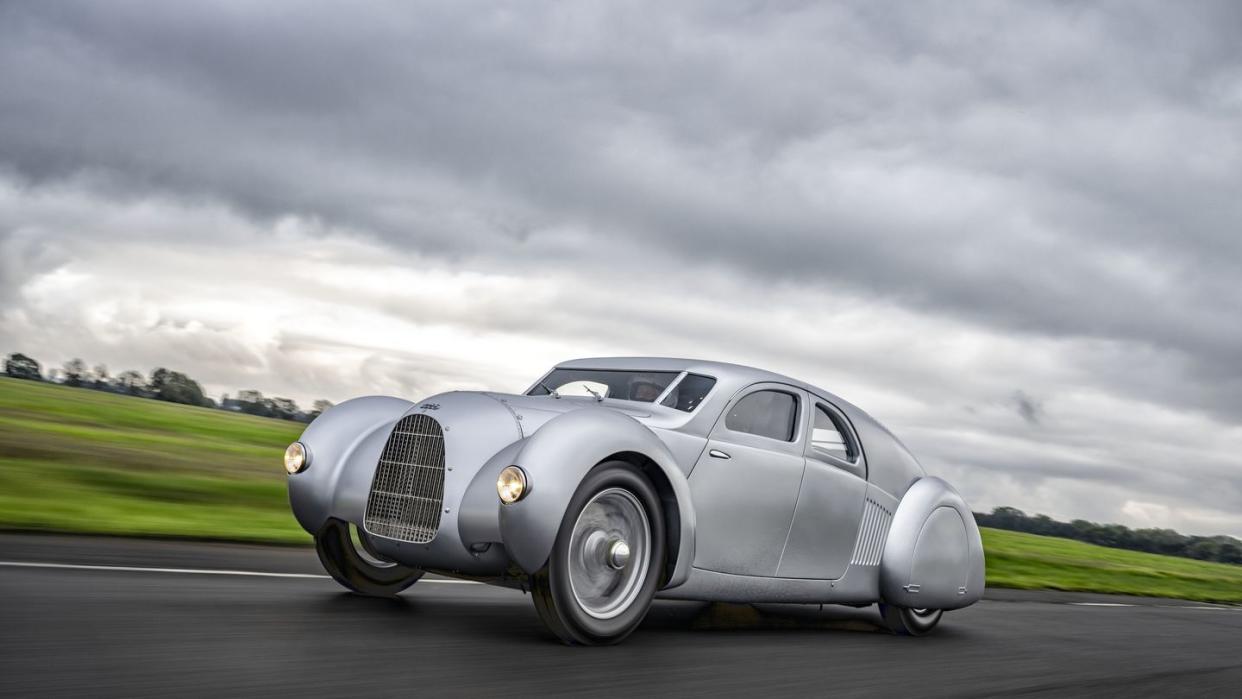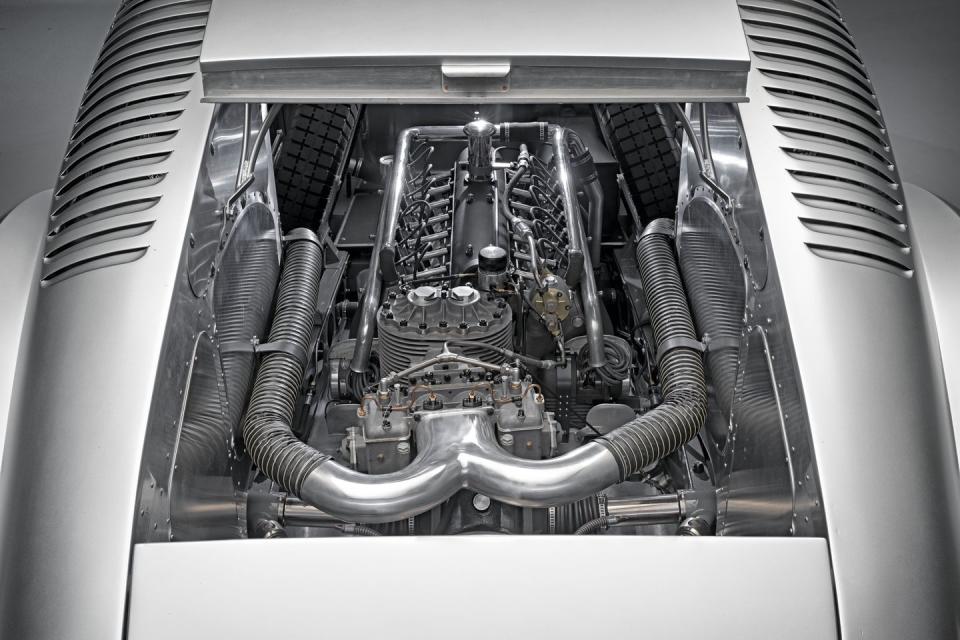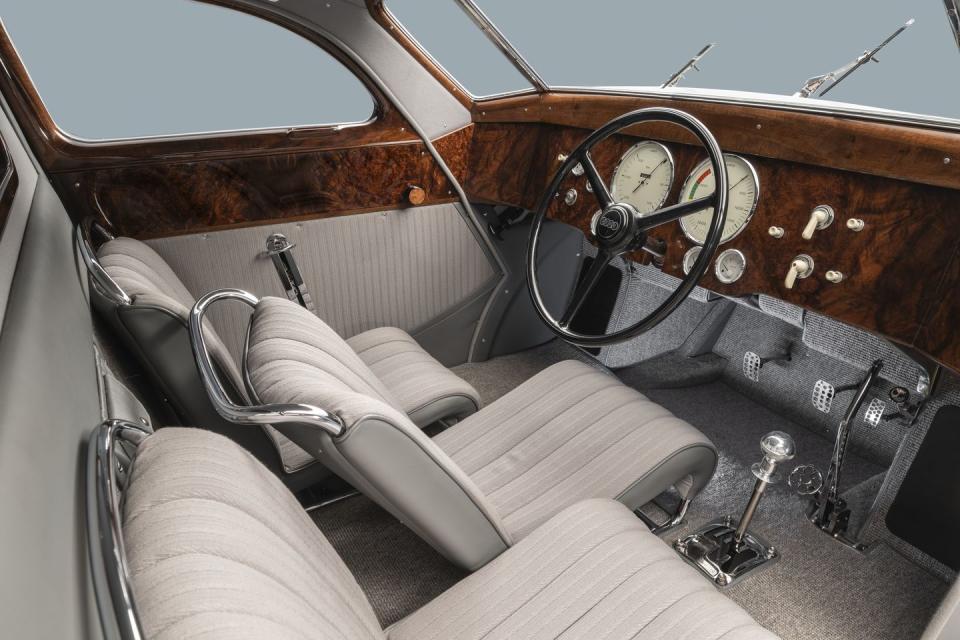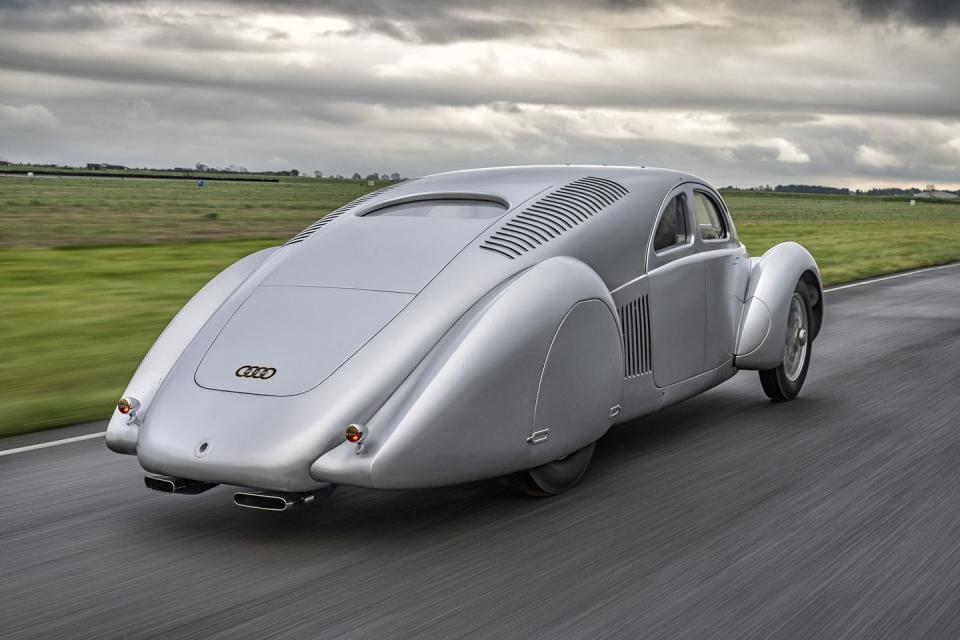Audi Built a 16-Cylinder Supercar Vision from the 1930s from Scratch

Audi built the Auto Union Type 52 in 2023, using the original documents from its development in the early 1930s.
The Type 52 uses a 16-cylinder engine from Auto Union's dominant Silver Arrow race cars.
The aerodynamic sports car also features a three-seat cabin.
While most automakers use the Goodwood Festival of Speed to show off their latest high-tech performance wares, Audi decided to travel back in time. In the 1930s, Audi's ancestor Auto Union was dominating Grand Prix racing with its Silver Arrow race cars and also began planning a street-legal version powered by the same 16-cylinder engine. The vehicle, called the Type 52, never materialized, but now Audi has built the car from scratch based on historical documents.
Leafing through the History Books
Auto Union formed in 1932 when Audi, DKW, Horch, and Wanderer merged. The following year, the automaker asked Ferdinand Porsche—who would later found the eponymous sports-car company—to design a race car for the latest Grand Prix racing formula. The 1934 Auto Union Type A became the first Grand Prix car to situate the engine behind the driver, and the Auto Union Silver Arrows became commanding forces in European racing.

At the same time, Auto Union and Ferdinand Porsche's design office started developing a related street-legal sports car. The Auto Union Type 52, also called the Schnellsportwagen, was supposed to be for customers who wanted to race in long-distance events like the Mille Miglia or endurance racing like the 24 Hours of Le Mans. The first sketches were completed in 1933, but the full-scale test car never came to fruition, and the project was abandoned in 1935. The drawings and development work, however, remained in the archives, allowing Audi to create the car now.
Race Car Design
The Type 52 was designed to share many of its mechanical components with the Silver Arrow race cars. Its ladder frame chassis houses a mid-mounted engine. The 4.4-liter 16-cylinder behemoth shared with the Type A was supposed to produce 197 horsepower and 322 pound-feet of torque. Compared with the Grand Prix cars, the engine's compression would have been lowered to let the Type 52 run on regular gasoline, and the gear ratio of the Roots supercharger would also have been reduced. While output was down a bit from the race car, the Type 52 was still theorized to be capable of a 124-mph top speed.

The colossus measures 212 inches long and features an aerodynamic body with rounded fenders, a teardrop shape, and a large grille. Unlike the race cars, it gained a roof, headlights, and cargo space, along with room for two spare tires. The Type 52 holds three passengers, with the driver's seat in the middle and the rear passengers slightly offset to the side, similar to the McLaren F1.
Unladen, the Schnellsportwagen was designed to weigh 2866 pounds. The engine and five-speed gearbox were borrowed from the Grand Prix race car, but the engineers opted for a different suspension setup. Instead of transverse leaf springs and friction dampers, the Type 52 features longitudinal torsion spring suspension and hydraulic dampers. The 29 gallon fuel tank lives under the seats and there are drum brakes on all four wheels.
Building the Type 52

Using the archived documents, Audi commissioned historic race car specialists
Crosthwaite and Gardiner to finally build the Schnellsportwagen, completing the car in 2023. No photos of a Type 52 model exist, as many files and photos were lost during World War II. Every piece of the modern re-creation was custom made and handcrafted, and the process revealed that the original Auto Union engineers would have needed to make some changes to get the Type 52 into production.
For example, the wheelbase needed to be lengthened from its original dimensions to fit the front suspension, engine, and transmission. There was little guidance for the interior, which was meant to be inspired by the Auto Union race cars. The documents also didn't say what color the Type 52 might have been painted at the time, so Audi used the same Cellulose Silver as the Grand Prix racers.

Audi also deviated from the engine design the Auto Union engineers originally envisioned, instead plopping in the 6.0-liter 16-cylinder from the Auto Union Type C and leaving the power output unrestricted at a whopping 512 horsepower. This means the engine has to drink a special methanol mixture instead of standard gasoline. The finished product is also a bit heavier than Auto Union intended at 3197 pounds.
This one-off creation is set to drive up the hill-climb at this week's Goodwood Festival of Speed with nine-time Le Mans winner Tom Kristensen and two-time Le Mans victor Hans-Joachim Stuck taking turns behind the wheel.
You Might Also Like

 Yahoo News
Yahoo News 
